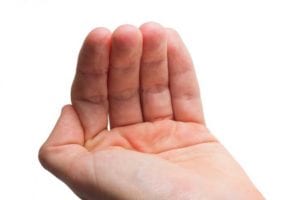COLLEGE PARK, MD – Fresh out of the ABMS office, it has been confirmed, Dr. Geaux Negolfing has applied and been approved to start his new fellowship. The world’s first declared sub-subspecialist in left hand surgery, he is now accepting applications for these coveted positions at the world famous University of Maryland.

Geaux said his epiphany came one day while being consulted in the emergency department at the late hour of 2 pm on a sunny Thursday. After unsuccessfully arguing with the emergency physician on duty if he was sure the injury was distal to the wrist and not proximal thereby best served by general orthopedic, general surgery, or even podiatry teams, he reluctantly came in to care for the patient who’s hand was caught in a meat grinder. It was there in the ED that he overheard the greatest block to a consultation of all. The thoracic surgeon argued he shouldn’t be consulted on the dissection because it was the ascending aortic arch and not the descending aortic arch and therefore cardiac surgery should be called.
As a tear welled up in Dr. Negolfing’s eye as if he discovered the Heart of the Ocean, he stated “by specializing in hand laterality it allows greater quality of care for patients and better outcomes, I’m surprised no one has done this before.”
When asked about his future plans for this sub-subspecialty, Dr. Geaux Negolfing said he intends to further subspecialize into left hand surgery in the left hand dominant patient. By creating this sub-sub-subspecialty, patients will get the care they need by ensuring the surgeons operating are well versed in the differences in musculature of left handed injuries in left hand dominant from non-left hand dominant patients.
Dr. Negolfing, hopes his discovery and hard work will lead to a movement of further subspecialty refinement. “The possibilities are endless,” states Geaux. “I foresee a future where vascular surgeons subspecialize into left iliac artery from right iliac artery and no longer caught up in this game of seeing every patient in the ED with injuries in our sub-subspecialty domains, but rather only the patients we are best suited to care for properly.”